Uiro is one of the simplest traditional Japanese sweets to make. It has a subtly sweet and glutinous texture, making it suitable not only as a dessert but also as a snack.
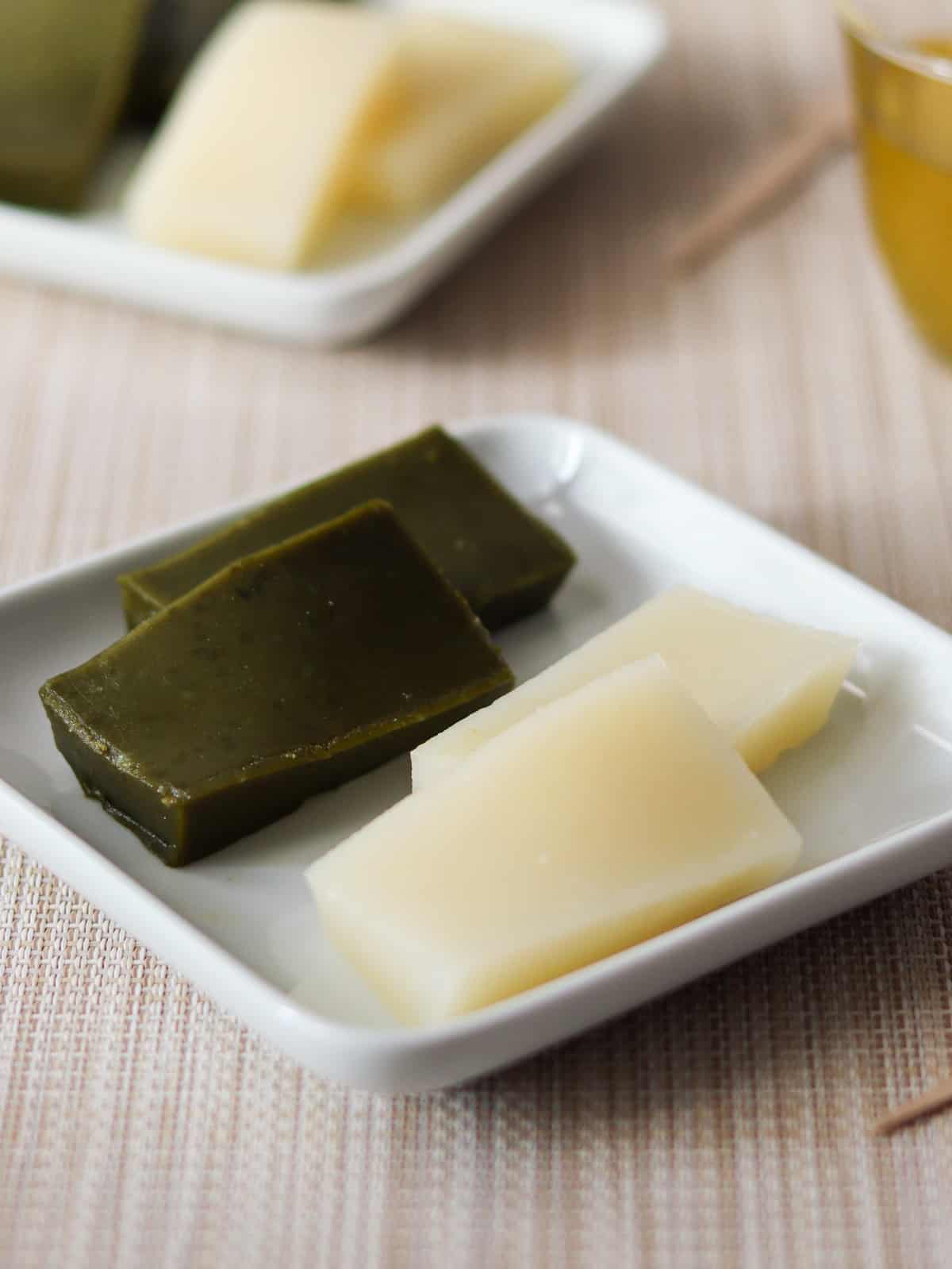
Jump to:
What is Uiro?
Uiro is a traditional Japanese sweet that is rectangular in shape and primarily made from flour (or starch) and sugar. Traditionally, this dessert is made using a steamer, but when making it at home, it is commonly cooked in the microwave. It has a moderately sweet taste and a glutinous texture, making it appealing even to those who don't prefer overly sweet desserts.
Since it requires only a few ingredients and is easy to make, it is also a great option for beginners who have never made desserts before. By adding extra ingredients, you can create a variety of unique flavors as well.
Differences in texture
Uiro is enjoyed throughout Japan, but its texture varies significantly depending on the region due to the different types of flour or starch used. For example, in Aichi Prefecture, rice flour is commonly used, while in Mie Prefecture, wheat flour is preferred, and in Yamaguchi Prefecture, bracken starch is typically used. The differences in texture result from the choice of ingredients, as follows:
- Rice flour: It provides a soft and glutinous texture.
- Wheat flour: It offers a slightly firmer and less glutinous texture.
- Bracken starch: It gives a glutinous and jelly-like texture.
In Japan, the most famous type of uiro is made with rice flour in Nagoya, Aichi Prefecture. However, I personally consider the one made with wheat flour in Ise, Mie Prefecture, to be the most delicious.
Therefore, I'm sharing a recipe using wheat flour here. By changing the type of ingredient used, you can also create uiro with a different texture. Feel free to experiment with different ingredients to find your preferred texture.
Flavor variations
You can make plain uiro (white uiro) by following the recipe, but you can also create flavored uiro by substituting or adding ingredients. By replacing white sugar with brown sugar, you can make brown uiro. Adding matcha powder will create green uiro, while incorporating food coloring can result in pink uiro.
Additionally, you can include sweet red beans or chestnuts. In recent years, new uiro flavors such as coffee and honey have also become popular in Japan.
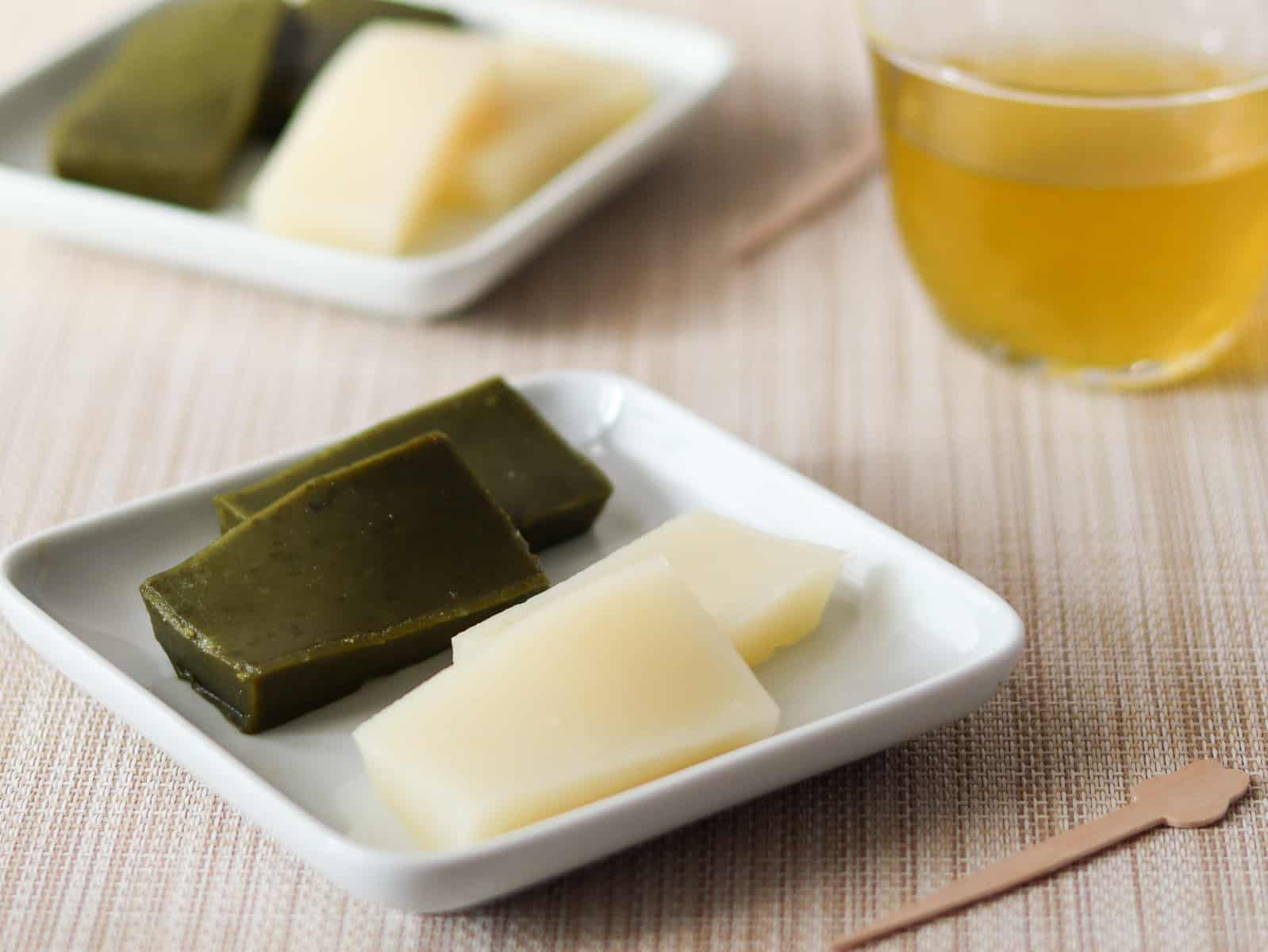
📋Step-by-step recipe
Ingredients
- ⅖ cup cake flour (wheat flour)
- ¼ cup white sugar
- ⅗ cup water
This recipe is for plain uiro (white uiro). You can also make brown uiro by using brown sugar instead of white sugar.
Additionally, you can make green uiro by adding matcha powder. In that case, add 1 tsp of matcha powder and reduce the amount of cake flour by 1 tsp for every 2 servings.
Instructions
🕒 Total: 1 hr 30 mins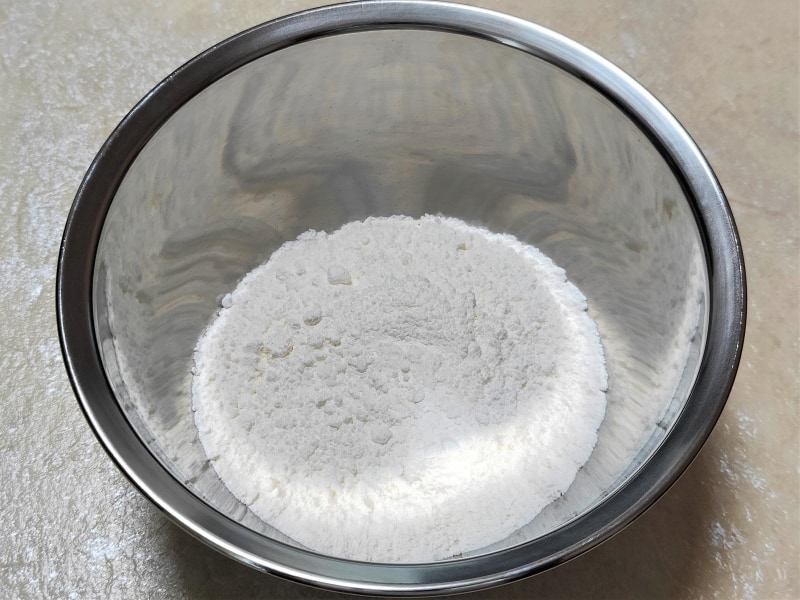
Step 1
Combine cake flour and sugar in a bowl. (If you are adding matcha powder, mix it in at this point.)
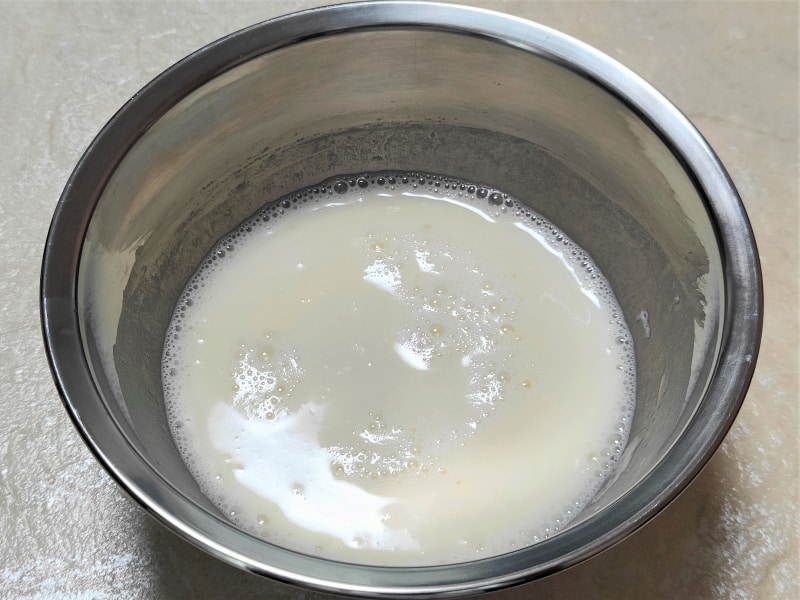
Step 2
Add water to the bowl in several portions, mixing well each time.
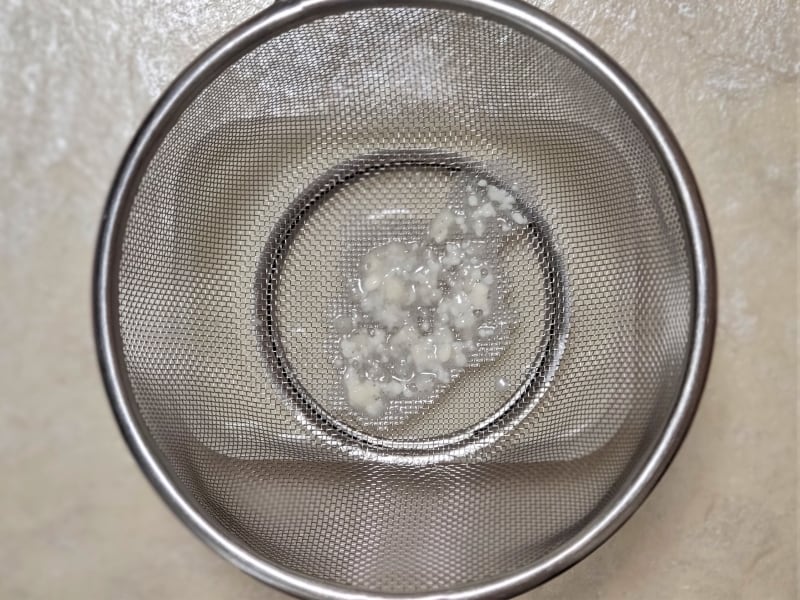
Step 3
Strain the mixture through a sieve into a microwave-safe square container.
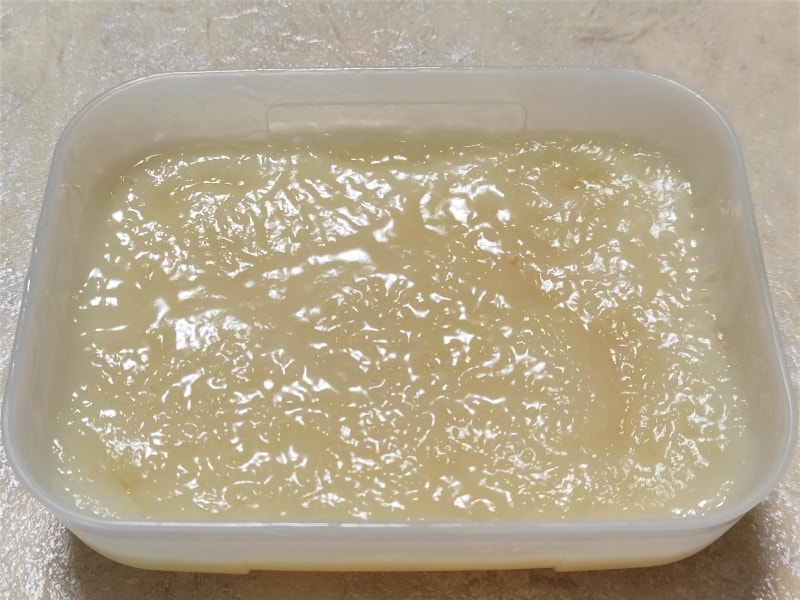
Step 4
Loosely cover the container with plastic wrap and microwave on medium power (500W) for 5 minutes. After microwaving, let it cool, then refrigerate for about 1 hour.
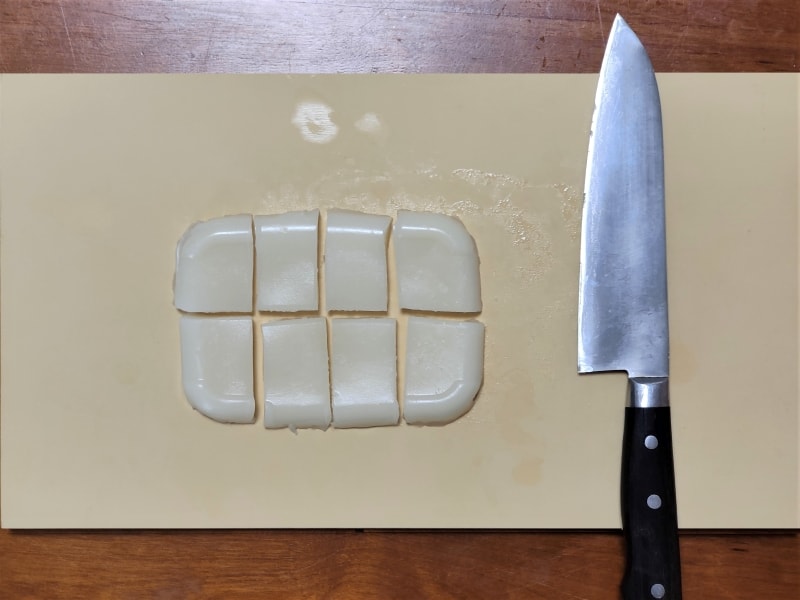
Step 5
Remove the solidified mixture from the container and cut it into bite-sized pieces using a wet knife.
To store
You can store it at room temperature or in the refrigerator for up to 2 days.
Tips on how to make
- Thoroughly mix the flour, sugar, and water. Avoid forming lumps as much as possible, as they can prevent the mixture from achieving a smooth texture.
- Strain the mixture through a sieve to achieve a smooth, even texture. It may seem like an extra step, but it will make a significant difference in the final result.
- Microwave on medium power (500W). If you use the high power setting, the mixture may expand and overflow from the container.
If you try this recipe, I’d love to hear what you think. Please consider leaving a review and star rating in the comments below. If you enjoyed it, I’d really appreciate it if you shared it with your friends.
Recipe card
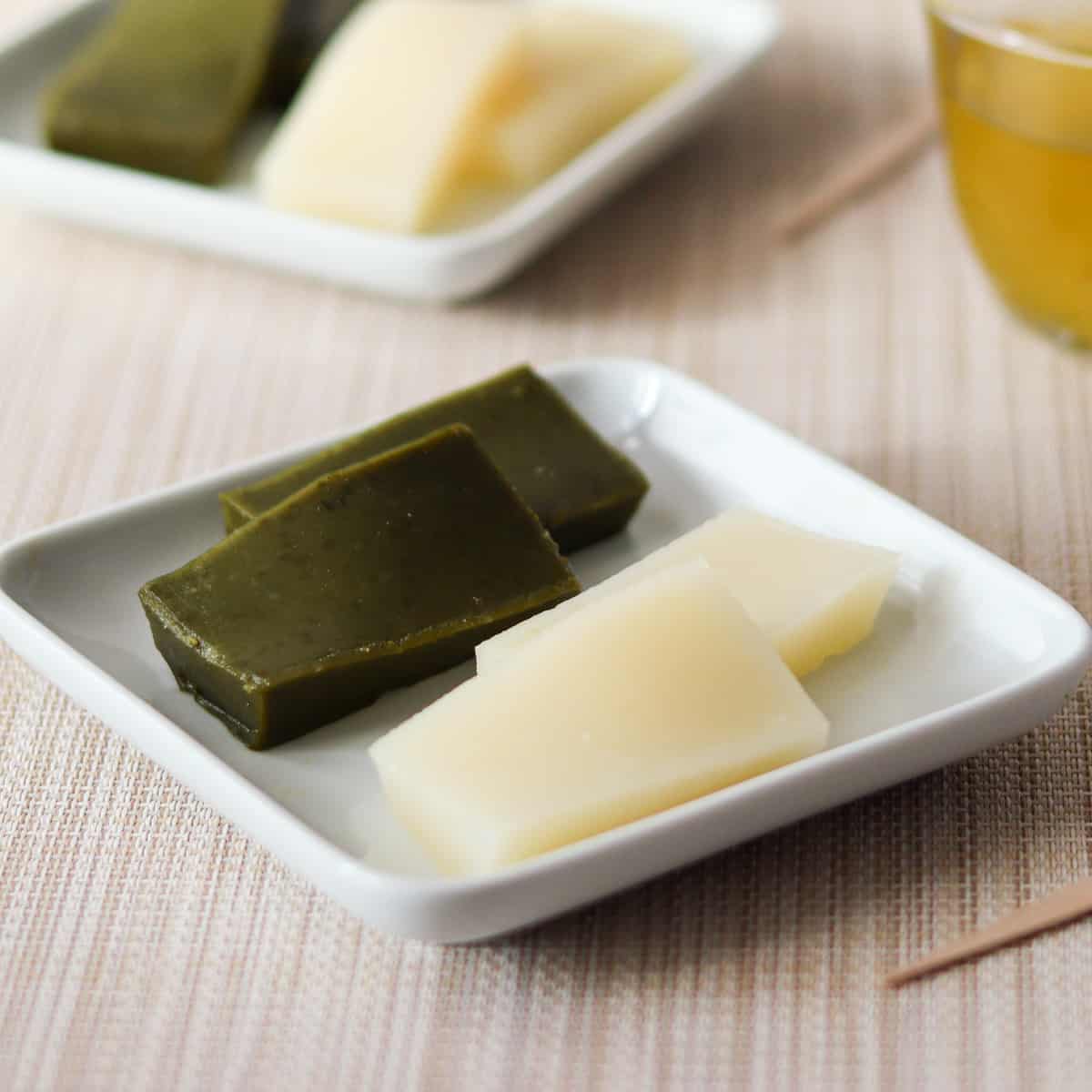
Uiro (Traditional Japanese Steamed Cake)
Ingredients
- ⅖ cup cake flour (wheat flour)
- ¼ cup white sugar
- ⅗ cup water
Instructions
- Combine cake flour and sugar in a bowl. (If you are adding matcha powder, mix it in at this point.)
- Add water to the bowl in several portions, mixing well each time.
- Strain the mixture through a sieve into a microwave-safe square container.
- Loosely cover the container with plastic wrap and microwave on medium power (500W) for 5 minutes. After microwaving, let it cool, then refrigerate for about 1 hour.
- Remove the solidified mixture from the container and cut it into bite-sized pieces using a wet knife.
Notes
- This recipe is for plain uiro (white uiro). You can also make brown uiro by using brown sugar instead of white sugar. Additionally, you can make green uiro by adding matcha powder. In that case, add 1 tsp of matcha powder and reduce the amount of cake flour by 1 tsp for every 2 servings.
- You can store it at room temperature or in the refrigerator for up to 2 days.

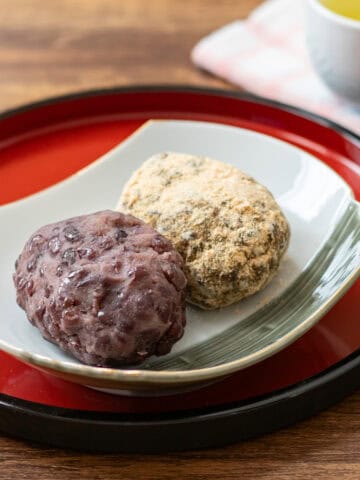
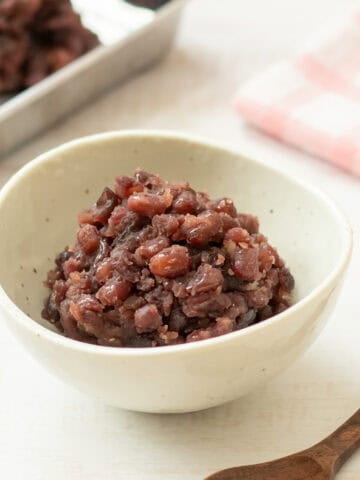

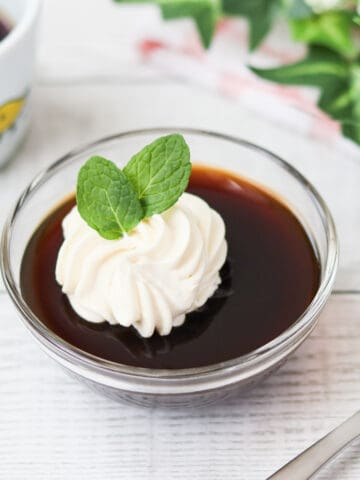
Amelie says
what do you meen by cake flour ? is it rice flour, glutinous ?
Ryo Hikita (Umami Pot) says
Hi Amelie,
Thank you for your question! Cake flour refers to a type of wheat flour that is finely milled and has a lower protein content compared to all-purpose flour. It's often used in baking to achieve a softer and more tender texture in cakes. You should be able to find it in the baking aisle of grocery stores.
I hope this helps clarify things!